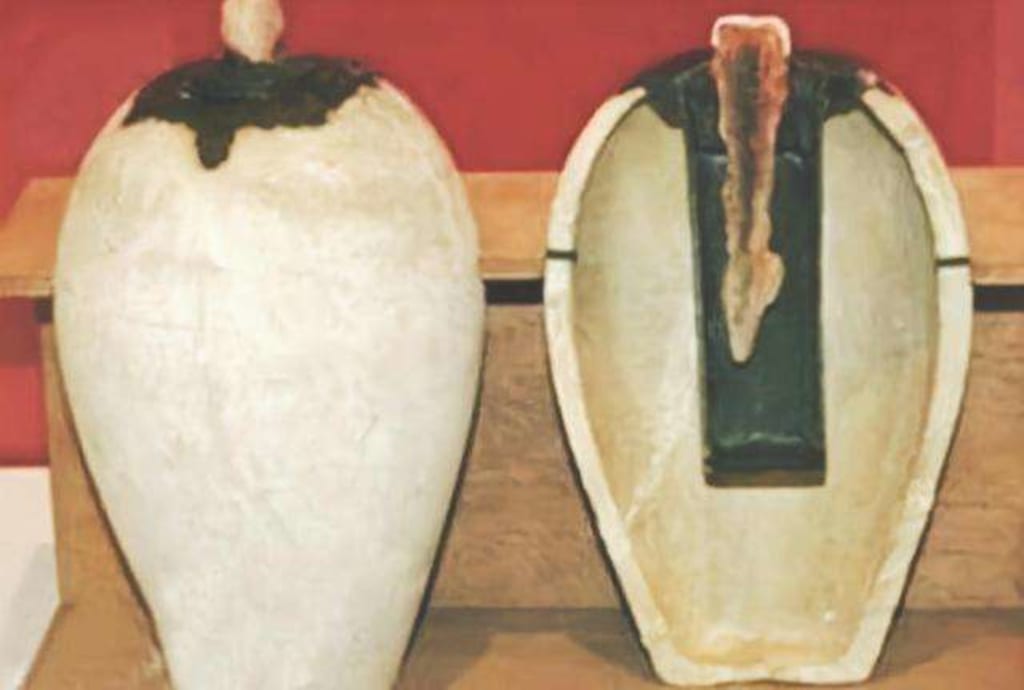
In June 1936, on the outskirts of Baghdad, as usual, a group of road builders started building a road here early in the morning. A worker suddenly shoveled a hard thing and couldn't dig it, so he called for help from his companions. Everyone worked together and dug hard around here, but a huge sarcophagus was dug up. Archaeologists came immediately, carefully opened the sarcophagus, and found a large number of gold and silver utensils and rosaries composed of 613 pearls and other valuables, which were identified by experts as cultural relics of the Persian dynasty between 248 and 226 BC.
Among these artifacts, some people never knew what they were used for. It was a strange pile of pottery utensils, rusted copper pipes and iron rods. The German archaeologist Wilhelm Cavinig, then director of the Iraqi Museum, described the strange artifacts this way: The pottery vessel resembled a vase, 15 centimeters high, with some pale yellow in the white, and the edges were broken. The upper end is mouth-shaped, and the bottle is filled with asphalt. There is a copper tube in the asphalt, 2.6 cm in diameter and 9 cm high. The top of the copper tube has a layer of asphalt insulator, and in the copper tube there is another layer of asphalt, and there is a rusty iron rod. The iron rod is 1 cm above the asphalt insulator and is covered by a layer of gray-yellowish material that looks like a layer of lead.
After identification, Cavinig announced a news that shocked the world: "The pottery utensils, copper pipes and iron rods unearthed in Baghdad are an ancient chemical battery that can generate electricity as long as an acid solution is added."
Many people at the time said that Cavenig must be crazy or a big liar. As we all know, the battery was invented by the Italian scientist Volt in 1800 AD.
Just as everyone was accusing Cavenig, Cavenig mysteriously disappeared, and those ancient "batteries" disappeared. It turned out that Cavenig quietly brought these things back to Berlin and conducted an important experiment. He combined the pottery utensils, iron rods, asphalt insulators and copper pipes into 10 batteries, and there was an even more surprising discovery: The ancients probably connected these batteries in series to enhance electricity and gild statues and ornaments.
Did the ancients really use batteries? With a scientific and realistic attitude, another German archaeologist, Alan Egerbricht, decided to conduct experiments to verify this rumor himself. He modeled the prototype of the "battery" unearthed in Baghdad, and made some clay bottles, copper pipes and iron rods by himself, squeezed the juice from fresh grapes, and poured it into the copper pipes. A miracle happened, and the needle of the voltmeter connected to the battery suddenly moved, showing a voltage of 0.5 volts. Then Egerbricht did another experiment. He found a figurine, put it in a gold solution, and then energized it with an imitation Baghdad battery. Two hours later, a perfectly gilded statue was placed in front of him. Egerbricht announced: "I didn't believe it at first either, but my experiments at least proved that Mr. Kavinig didn't panic."
Coincidentally, traces of batteries have also been found in the mysterious ancient Egyptian pyramids. Among the pyramid buildings in ancient Egypt, the largest one is the Pyramid of Khufu built in Giza, a suburb of Cairo, about 4,600 years ago. Its internal structure is extremely complex and magical, and it is decorated with carvings and paintings. This work should be done by torch lighting or under oil lamps. However, modern scientists have conducted a comprehensive and careful scientific analysis and analysis of the dust accumulated in the tomb and the corridor for more than 4,600 years. It can be seen that when ancient Egyptian artists carved and painted murals in the catacombs and corridors of Khufu's pyramids, they did not use torches or oil lamps for lighting at all, but probably used some kind of special battery or other electrical device that can emit light.
American scientists also conducted a series of experiments to verify the authenticity of the Baghdad battery. They first also succeeded in obtaining 0.5 volts from an imitation Baghdad battery and used it continuously for 18 days. They used a variety of solutions that ancient humans had discovered or started using, such as grape juice solution, acetic acid, copper sulfate, etc. The scientists who participated in the experiment agreed that they did not know what other uses these things had other than power generation.
In 1938, German archaeologist Koenig unearthed another set of batteries from ancient times on the outskirts of Baghdad. Different from two years ago, the ancient batteries discovered this time were copper shells, copper cores, and shells fixed with the help of aluminum and tin. Yes, this method is still widely used today.
It is indeed inconceivable that Egyptians or Baghdad people more than 2,000 years ago have begun to use batteries to generate electricity and plate gold, and it is no wonder that people have taken a cautious attitude towards this. To clarify the authenticity, I am afraid that new scientific discoveries are still needed.
About the Creator
Thomas
Story is the carrier of civilization, write a story and experience a life.






Comments
There are no comments for this story
Be the first to respond and start the conversation.